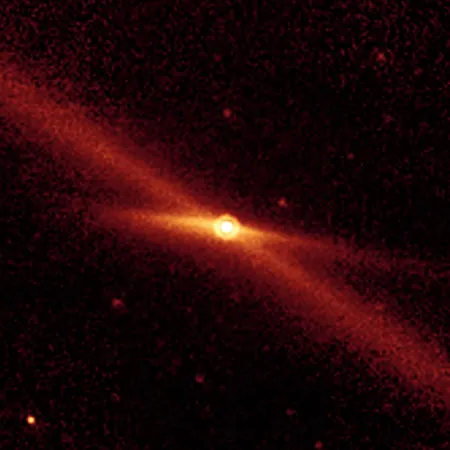
Groundbreaking Discovery: Fewer Dangerous Asteroids Threaten Earth Than Previously Thought!
2024-10-09
Author: Liam
Groundbreaking Discovery: Fewer Dangerous Asteroids Threaten Earth Than Previously Thought!
In an exciting revelation for planetary defense enthusiasts, astronomers utilizing the Zwicky Transient Facility (ZTF) have conducted an in-depth study of the Taurid resonant swarm—an expansive interplanetary region that includes the well-known comet 2P/Encke and several meteoroid streams, alongside a potential collection of near-Earth asteroids.
Dr. Quanzhi Ye, an esteemed astronomer from the University of Maryland, highlighted the significance of this study: “We took advantage of a rare alignment when this swarm of asteroids passed unusually close to Earth, enabling us to conduct a more efficient search for objects that could threaten our planet.”
The results of their investigation have been nothing short of reassuring. Previously, astronomers believed that the Taurid swarm harbored numerous large asteroids, possibly up to 100 kilometers (62 miles) in diameter, capable of causing catastrophic damage. Regrettably, large asteroid impacts such as the Chelyabinsk event in 2013 serve as stark reminders of the danger posed by these celestial bodies.
However, this new research indicates that the actual risk may be much lower than anticipated. “We discovered that there may only be about nine to fourteen large asteroids in the Taurid swarm,” Dr. Ye explained. “The original parent object from which the swarm originated is likely closer to 10 kilometers (6.2 miles) in diameter, far from the previously speculated 100 kilometers.”
This revelation profoundly impacts our understanding of potential asteroid threats and reassures the public: “While we must remain vigilant about the dangers of asteroid impacts, our findings suggest that we can rest a little easier,” Dr. Ye stated.
The study of the Taurid swarm offers not only insight into the potential hazards these celestial bodies may pose but also provides significant clues regarding planetary evolution. The comet Encke, part of this swarm, is particularly intriguing. With one of the shortest orbits of any known comet, taking only 3.3 years to circle the Sun, it is characterized by its larger-than-usual size and a dusty composition. Researchers theorize that Encke has undergone substantial fragmentation in the past and could continue to do so in the future.
Understanding the Taurid swarm is crucial for unraveling the complex processes behind the formation and disintegration of small celestial bodies such as comets and asteroids. “Our work not only aids in detecting and preparing for asteroid threats but also enriches our knowledge of solar system dynamics,” Dr. Ye emphasized.
These groundbreaking findings were presented at the recent DPS56 conference, hosted by the American Astronomical Society’s Division for Planetary Sciences, signaling a pivotal step forward in our ongoing quest to safeguard Earth from cosmic threats.
Stay tuned as we continue to follow this captivating story and reveal how scientists are working behind the scenes to ensure our planet remains safe from the vast and unpredictable universe!









 Brasil (PT)
Brasil (PT)
 Canada (EN)
Canada (EN)
 Chile (ES)
Chile (ES)
 España (ES)
España (ES)
 France (FR)
France (FR)
 Hong Kong (EN)
Hong Kong (EN)
 Italia (IT)
Italia (IT)
 日本 (JA)
日本 (JA)
 Magyarország (HU)
Magyarország (HU)
 Norge (NO)
Norge (NO)
 Polska (PL)
Polska (PL)
 Schweiz (DE)
Schweiz (DE)
 Singapore (EN)
Singapore (EN)
 Sverige (SV)
Sverige (SV)
 Suomi (FI)
Suomi (FI)
 Türkiye (TR)
Türkiye (TR)